The different types of magnets include:
Alnico Magnets
Alnico magnets exist in the cast, sintered, and bonded versions. The most common are cast alnico magnets. They are a very crucial group of permanent magnet alloys. The alnico magnets contain Ni, A1, Fe, and Co with some minor additions of Ti and Cu. The alnicos have relatively very high coercivities because of the shape anisotropy of Pe or Fe, Co particles. These particles are precipitated in a weakly ferromagnetic or non-ferromagnetic Ni—Al matrix. After cooling, the isotropic alnicos 1-4 are tempered for several hours at a high temperature.
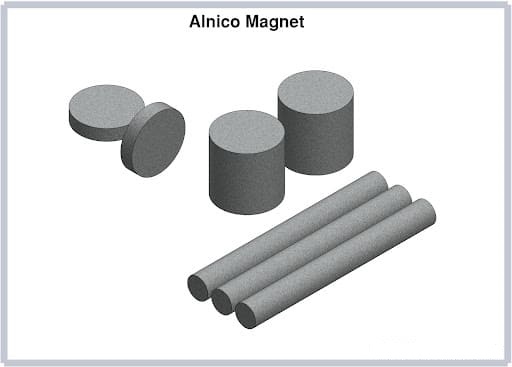
Spinodal decomposition is the process of phase separation. Final sizes and shapes of the particles are determined in the very early stages of the spinodal decomposition. Alnicos have the best temperature coefficients so over a temperature change they have the least change in field output. These magnets can operate at the highest temperatures of any magnet.
Demagnetization of the alnicos can be reduced if the working point is improved, such as for making use of a longer magnet than before in order to increase the length to diameter ratio which is a good rule of thumb guide for the Alnico magnets. All external demagnetizing factors must be taken into consideration however. A huge length to diameter ratio and a good magnetic circuit may also be required.
Bar Magnets
Bar magnets are rectangular pieces of objects, which are made up of steel, iron or any other ferromagnetic substance that have characteristics or strong magnetic properties. They consist of two poles, a north pole and a south pole.
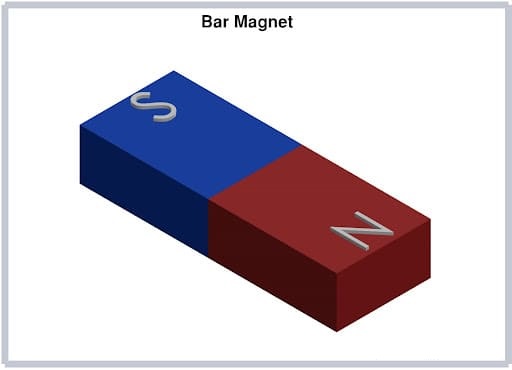
When the bar magnet is suspended freely, it aligns itself so that the north pole points towards the direction of the magnetic north pole of the earth.
There are two types of bar magnets. Cylindrical bar magnets are also called rod magnets and they have a very high thickness in the diameter enabling their high magnetism property. The second group of bar magnets are rectangular bar magnets. These magnets find most applications in the manufacturing and engineering sectors as they have magnetic strength and field greater than other magnets.
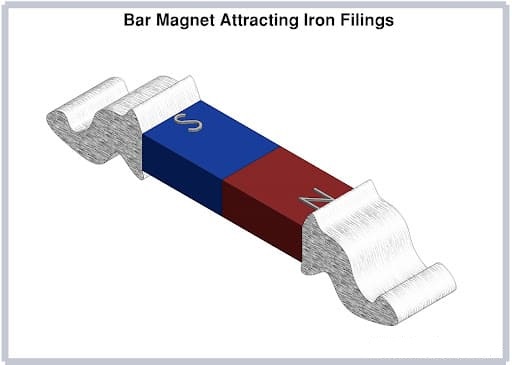
If a bar magnet is broken from the middle, both pieces will still have a north pole and a south pole, even if this is repeated several times. A bar magnet’s magnetic force is strongest at the pole. When two bar magnets are brought close to each other, their unlike poles definitely attract and like poles will repel each other. Bar magnets attract ferromagnetic materials such as cobalt, nickel, and iron.
Bonded Magnets
Bonded magnets have two main components: a non-magnetic polymer and a hard magnetic powder. The latter can be made from all sorts of magnetic materials, including alnico, ferrite and neodymium, cobalt and iron. Two or more magnetic powders can also be mixed together thereby forming a hybrid mixture of the powder. The properties of the powder are carefully optimized through chemistry and step by step processing which aims to utilize a bonded magnet no matter what the materials are.
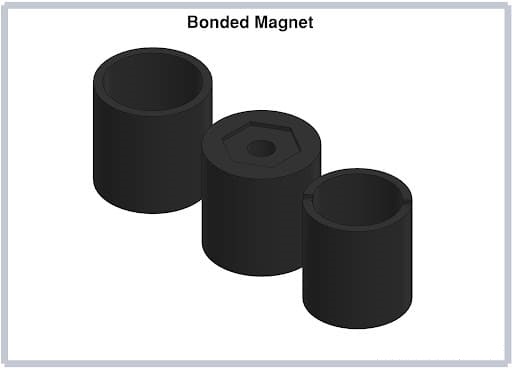
Bonded magnets have numerous advantages in that the near net shape manufacturing requires no or low finishing operations when compared to other metallurgical processes. Therefore value added assemblies can be made economically in one operation. These magnets are a highly versatile material and they consist of multiple processing options. Some advantages of bonded magnets are that they have excellent mechanical properties and great electrical resistivity when compared with sintered materials. These magnets are also available in different complex sizes and shapes. They have good geometric tolerances with very low secondary operations. They are also available with multipole magnetization.
Ceramic Magnets
The term ceramic magnet refers to Ferrite magnets. These ceramic magnets are part of a permanent magnet family. They are the lowest cost available when compared to other magnets. Materials that make ceramic magnets are iron oxide and strontium carbonate. These ferrite magnets have a medium magnetic strength ratio and they can be used at high temperatures. One special advantage they have is that they are corrosion resistant and very easy to magnetize, making them the first choice for a lot of consumers, industrial, technical and commercial applications. Ceramic magnets have different grades with the commonly used being Grades 5. They are available in different shapes such as blocks and ring shapes. They can also be custom manufactured to meet the customer’s specific requirements.
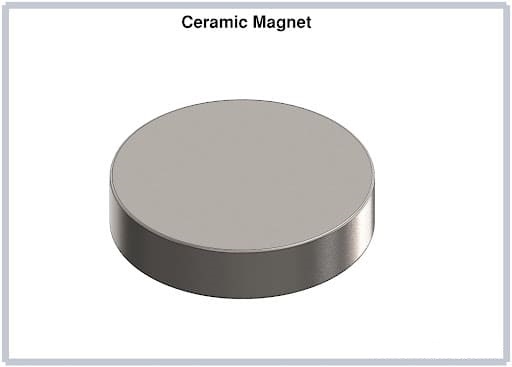
Ferrite magnets can be used at high temperatures. The magnetic properties of ceramic magnets drop down with temperature. They also require special machining skills. Another added advantage is that they do not need to be protected from surface rust because they comprise a film of magnet powder on their surface. On bonding, they are often attached to products by making use of superglues. Ceramic Magnets are very brittle and hard, breaking easily if dropped or smashed together, so extra caution and care are needed when handling these magnets.
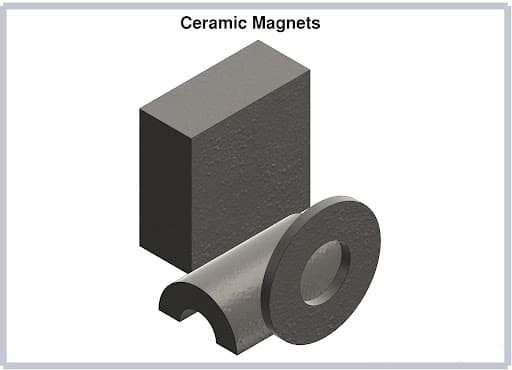
Electromagnets
Electromagnets are magnets in which an electric current causes the magnetic field. Usually they consist of a wire that is wound into a coil. The current creates a magnetic field through the wire. When the current is turned off the magnetic field disappears. Electromagnets consist of wire turns which are usually wound around a magnetic core that is made from a ferromagnetic field. The magnetic flux is concentrated by the magnetic core, producing a more powerful magnet.
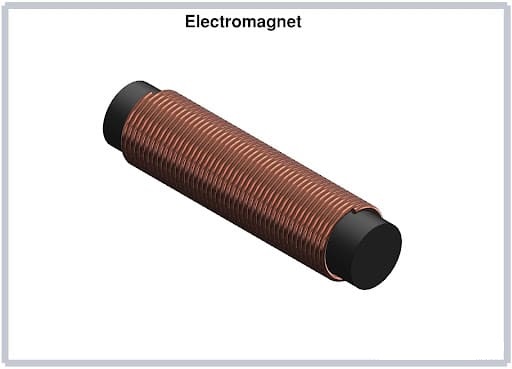
An advantage of electromagnets compared to permanent magnets is that a change can be applied quickly to the magnetic field by regulating the electric current in the winding. However, a major drawback of electromagnets is that there is a need for a continuous supply of current to maintain the magnetic field. Other drawbacks are that they heat up very fast and consume a lot of energy. They also discharge huge amounts of energy in their magnetic field if there is an interruption on the electric current. These magnets are often used as components of various electrical devices, such as generators, relays, electro-mechanical solenoids, motors, loudspeakers, and magnetic separation equipment. Another great use in industry is for moving heavy objects and picking up iron and steel crap. Some few properties of electromagnets are that magnets attract ferromagnetic materials like nickel, cobalt, and iron and like most magnets like poles move away from each other while unlike poles attract each other.
Flexible Magnets
Flexible magnets are magnetic objects designed to flex without breaking or otherwise sustaining the damage. These magnets are not hard or stiff, but can actually be bending. The one above shown in figure 2:6 may be rolled up. These magnets are unique because other magnets cannot bend. Unless it is a flexible magnet, it won't bend without deforming or breaking. A lot of flexible magnets have a synthetic substrate that has a thin layer of ferromagnetic powder. The substrate is a product of very flexible material, like vinyl. The synthetic substrate becomes magnetic when the ferromagnetic powder is applied to it.
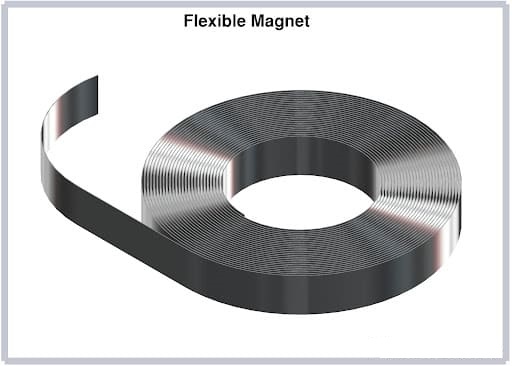
Many production methods are applied for manufacturing these magnets, however almost all of them involve the application of ferromagnetic powder to a synthetic substrate. The ferromagnetic powder is mixed together with an adhesive binding agent until it sticks to the synthetic substrate. Flexible magnets come in different types for example sheets of different designs, shapes, and sizes are usually used. Motor vehicles, doors, metal cabinets and buildings make use of these flexible magnets. These magnets are also available in strips, the strips are thinner and longer as compared to sheets.
On the market they are usually sold and packaged in rolls. Flexible magnets are versatile with their bendable properties and they can wrap around machines so easily as well as other surfaces and components. A flexible magnet is supported even with surfaces which are not perfectly smooth or flat. Flexible magnets can be cut and shaped into desired shapes and sizes. Most of them can be cut even with a traditional cutting tool. Flexible magnets are not affected by drilling, they will not crack but they will form holes without damaging the surrounding magnetic material.
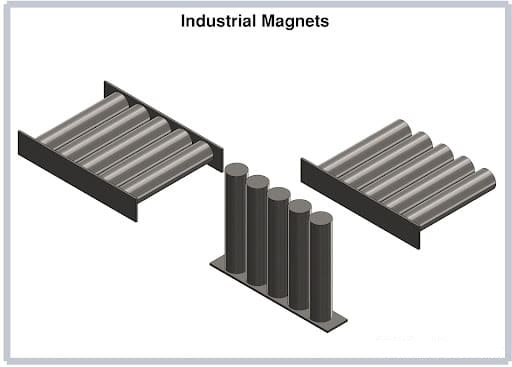
Industrial Magnets
An Industrial magnet is a very powerful magnet that is used in the industrial sector. They are adaptable to different kinds of sectors and they can be found in any shape or size. They are also popular for their numerous grades and qualities for keeping the properties of residual magnetism. Industrial permanent magnets can be made of alnico, rare earth, or ceramic. They are magnets which are made of a ferromagnetic substance which is magnetized by an outward magnetic field, and are capable of being in a magnetized state over a long period of time. Industrial magnets maintain their state without outward assistance, and they consist of two poles that show a rise in intensity near the poles.
Samarium Cobalt Industrial magnets can withstand high temperatures of up to 250 °C. These magnets are very resistant to corrosion since they do not have iron trace elements in them. However this magnet type is very costly to produce due to the high production cost of cobalt. Since cobalt magnets are worth the results they produce of very high magnetic fields, samarium cobalt industrial magnets are usually used in high operating temperatures, and make motors, sensors, and generators.
Alnico Industrial Magnet consists of a good combination of materials which are aluminum, cobalt, and nickel. These magnets may also include copper, iron, and titanium. In comparison to the former, alnico magnets are more heat-resistant and can withstand very high temperatures of up to 525 °C. They are also easier to demagnetize because they are highly sensitive. Industrial Electromagnets are adjustable and can be switched on and off.
The industrial magnets can have uses such as:
They are used to lift sheet steel, iron castings, and iron plates. These strong magnets are used in numerous manufacturing companies as high-powered magnetic devices that make work for the workers easy. The industrial magnet is put on top of the object and afterwards the magnetis is turned on to hold the object and make the transfer to the desired location. Some of the advantages of using industrial lifting magnets are that there is a very lower risk of muscle and bone problems amongst the workers.
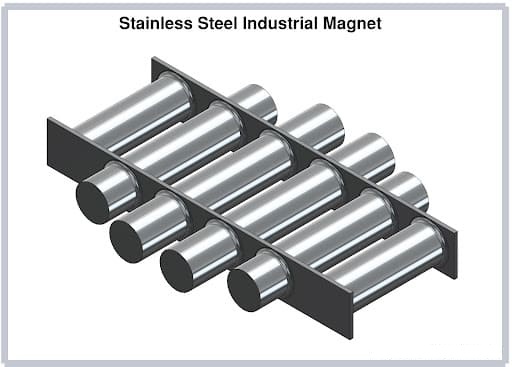
Making use of these industrial magnets helps manufacturing workers shield themselves from injuries, removing the need to physically carry the heavy materials. Industrial magnets improve productivity in numerous manufacturing companies, because the lifting and the carrying of heavy objects manually is time-consuming and physically draining for workers, their productivity is greatly affected.
Magnetic Separation
The process of magnetic separation involves separating components of mixtures by making use of a magnet to attract magnetic materials. Magnetic separation is very useful for the selection of a few minerals which are ferromagnetic, that is minerals that contain cobalt, iron, and nickel. Many of the metals, including silver, aluminum, and gold are not magnetic. A very large diversity of mechanical ways are usually used to separate these magnetic materials. During the process of magnetic separation, the magnets are arranged inside two separator drums which contain liquids, because of the magnets, the magnetic particles are being driven by the drum movement. This creates a magnetic concentrate for example an ore concentrate.
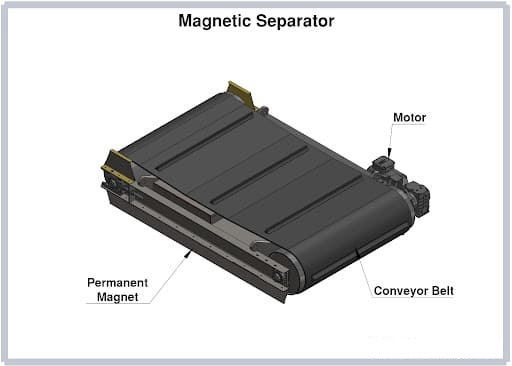
The process of magnetic separation is also used in electromagnetic cranes that separate magnetic material from unwanted materials. This brings to light its use for waste management and shipping equipment. Unnecessary metals can also be separated from goods with this method. All materials are kept pure. Various recycling facilities and centers make use of magnetic separation to remove components from recycling, separate metals, and to cleanse ores, magnetic pulleys, overhead magnets, and magnetic drums were the historical methods for recycling in industry.
Magnetic separation is very useful in mining iron. This is because iron is highly attracted to a magnet. This method is also applied in processing industries to separate metal contaminants from products. This process is also crucial in pharmaceutical industries as well as food industries. The magnetic separation method is most commonly utilized in situations where there is a need to monitor pollution, control pollution, and the processing of chemicals. The weak magnetic separation method is also used to produce smarter iron-rich products that can be reused. These products have very low levels of contaminants and a high iron load.
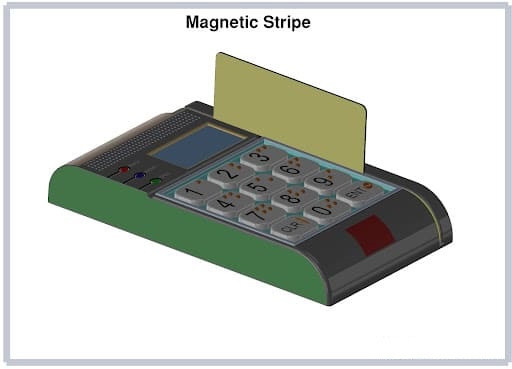
Magnetic Stripe
Magnetic stripe technology has allowed data to be stored on a plastic card. This was achieved by charging tiny bits magnetically within a magnetic stripe on one end of the card. This magnetic stripe technology has led to the build of the credit and debit card models. This has greatly replaced cash transactions in various countries all over the world. Magnetic stripe can also be called a magstripe. The creation of magnetic stripe cards which have very high durability and uncompromised data integrity, financial institutions and banks have been able to execute all kinds of card based transactions and processes.
Magnetic stripes are in uncountable numbers of transactions every day and are being made useful in numerous types of identification cards. People who specialize in card reading find it easy to quickly extract details off of a magnetic card, which is then sent to a bank for authorization. However, in the past years, a brand—new technology has increasingly come to rival magnetic card transactions. Many professionals refer to this modern method as the contactless payment system because it involves cases where transaction details may be transferred, not by a magnetic stripe, but by signals sent from a small chip. The company Apple Inc. has pioneered contactless payment systems.
Neodymium Magnets
These rare earth magnets are permanent magnets. They produce very strong magnetic fields, and The magnetic field produced by these neodymium magnets is over 1.4 teslas. Neodymium magnets have numerous applications outlined below. They are used in the making of hard disk drives which contain tracks and segments that feature magnetic cells. All of these cells are magnetized whenever the data is written to the drive. Another use of these magnets is in loudspeakers, headphones, microphones, and earphones.
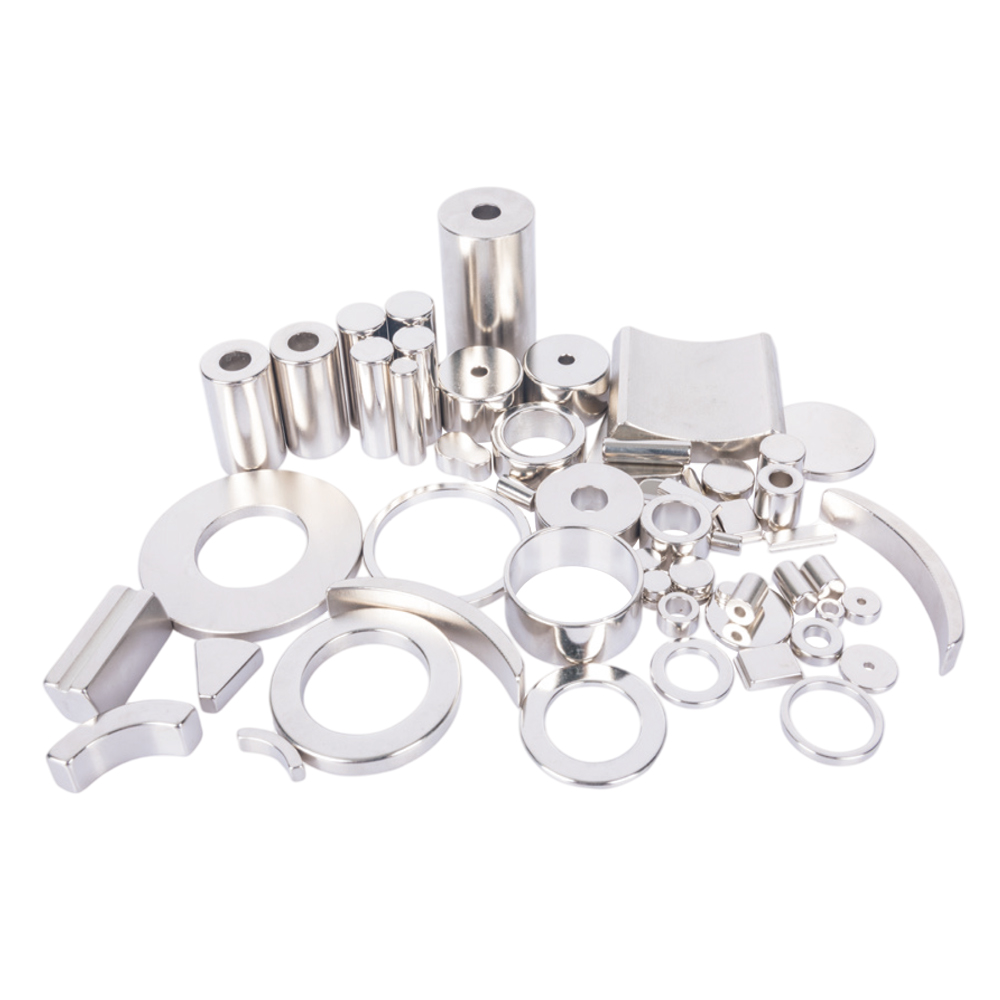
The current-carrying coils that are found in these devices are used together with permanent magnets to alter electricity into mechanical energy. Another application is that the small sized neodymium magnets are mostly used to place dentures perfectly in place. These magnets are used in residential and commercial buildings on the doors for safety reasons and total security. Another practical use of these magnets is in making therapy jewelry, necklace, and jewelry. Neodymium magnets are greatly used as anti-lock brake sensors, these anti-lock brakes are installed in cars and numerous vehicles.
Post time: Jul-05-2022



